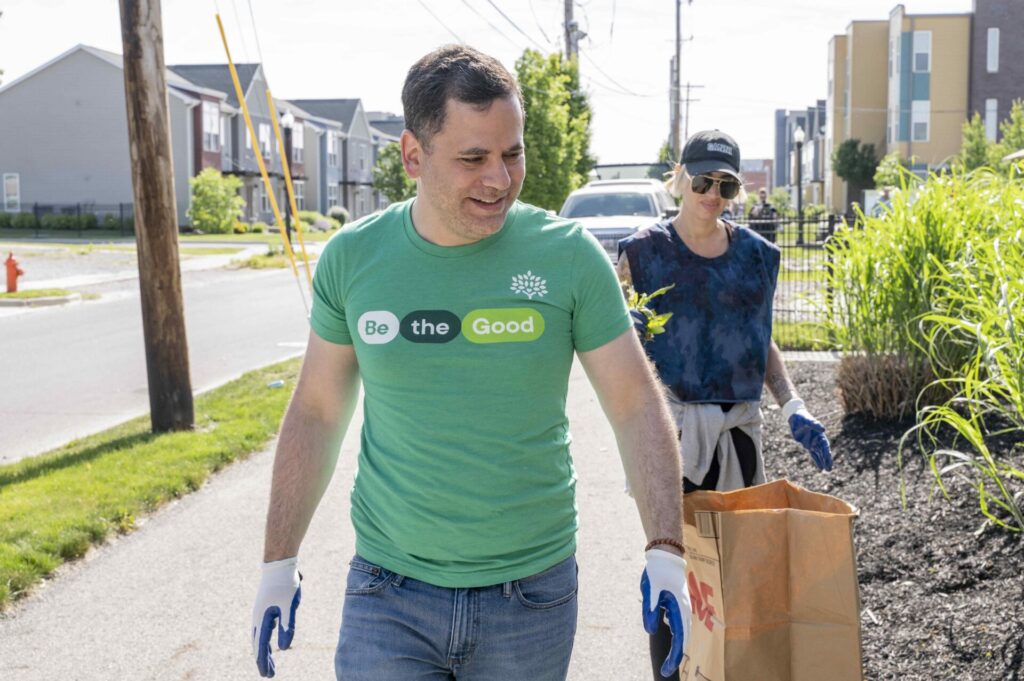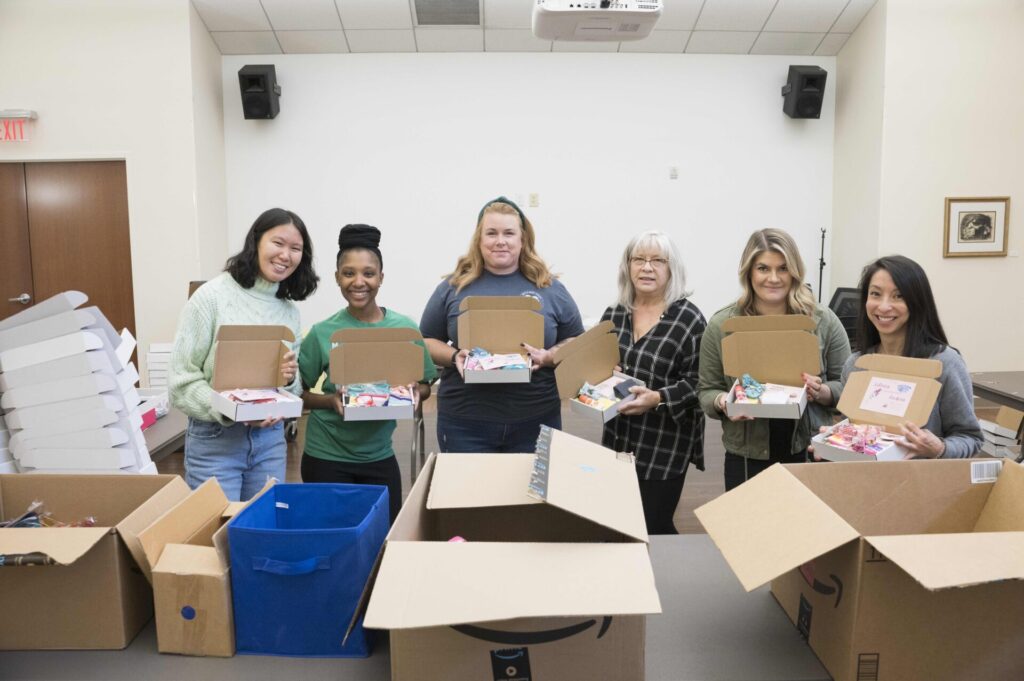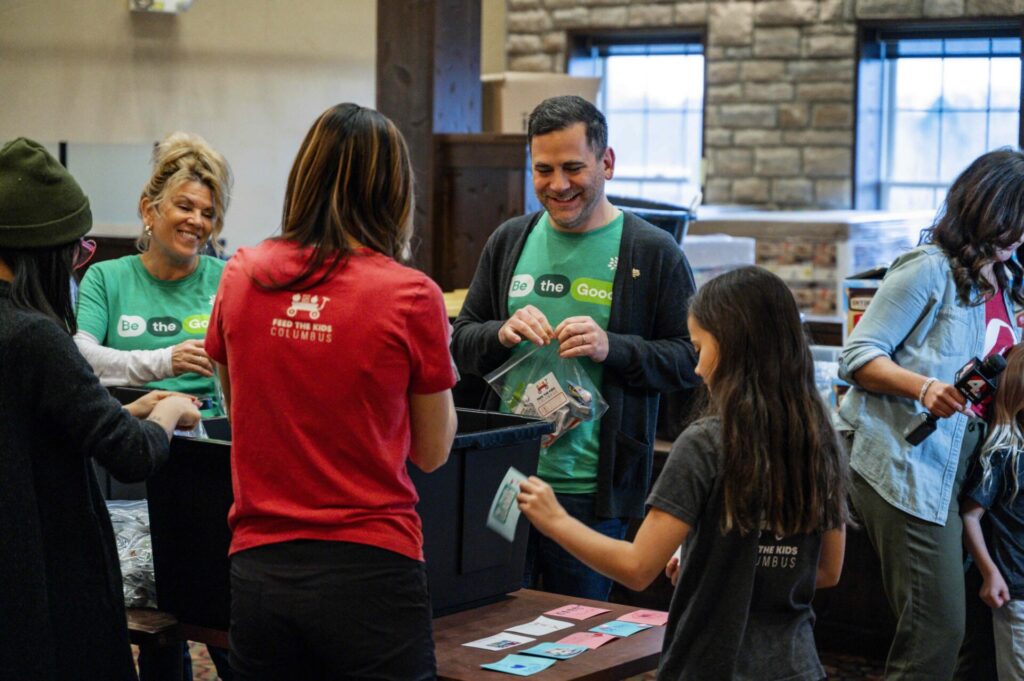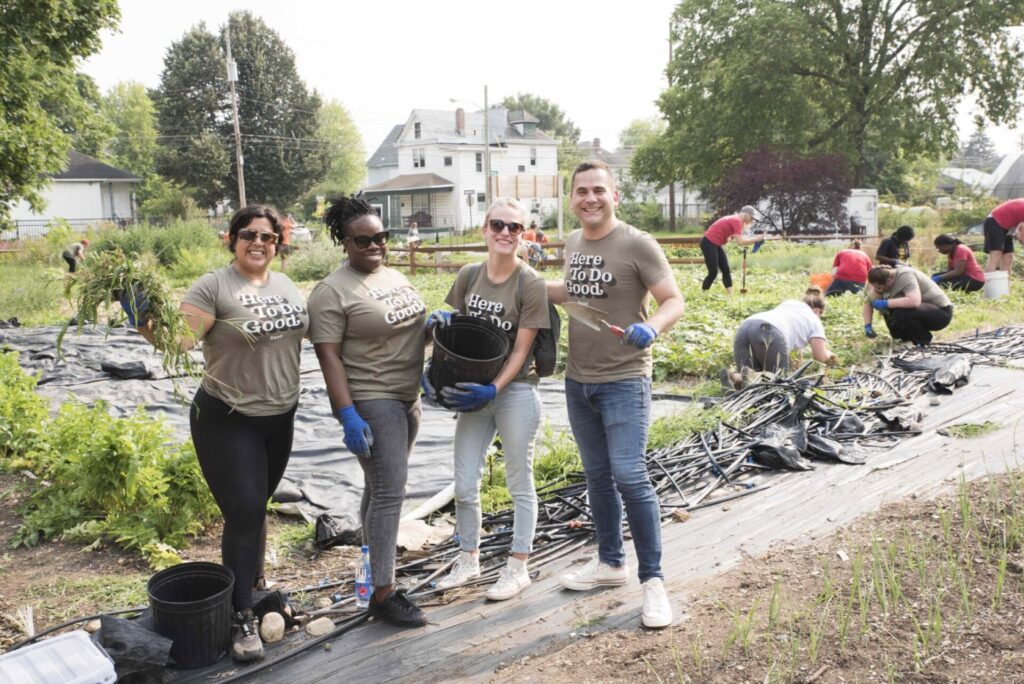“In the United States, as soon as several inhabitants have taken an opinion or an idea they wish to promote in society, they seek each other out and unite together once they have made contact. From that moment, they are no longer isolated but have become a power seen from afar whose activities serve as an example and whose words are heeded.” – Alexis de Tocqueville, Democracy in America
Volunteerism and philanthropy are tightly interconnected – and increasingly so. According to a recent Fidelity Charitable report “The Role of Volunteering in Philanthropy”, 61% of charitable donors are also recent volunteers and 39% of volunteers support a nonprofit by volunteering with the organization before they make a financial donation.
Noting generational shifts, 33% of millennials say they give more to the nonprofit they volunteer with than they would if they didn’t volunteer – compared to only 21% of Gen X and 12% of baby boomers. These trends reflect the importance of volunteerism to philanthropy – and highlight the significance of the nonprofit sector’s capacity to effectively engage volunteers in their important work.
In honor of National Volunteer Month, Philanthropy Roundtable’s Senior Director of Programs Esther Larson recently sat down with Matthew Goldstein, founder & CEO of Besa, who has a vision to “make giving back easy – and transformative”. Goldstein leads the Columbus-based nonprofit, which is dedicated to powering a wave of civic engagement that lifts us all and fulfills critical needs by connecting people to community service.
Initially starting in corporate America, Goldstein’s path led him to engage more deeply in his community – and provide pathways for others to do the same. With increasing loneliness, isolation and polarization in our country, a renewed commitment to volunteerism is playing a vital role in bringing diverse people together toward a bigger purpose.
The following interview has been edited for length and clarity.
Q: Tell us about yourself – how has volunteerism and giving back to the community become such an important part of your life?
Goldstein: I was working in corporate America for one of the world’s largest retail companies, and it was challenging and wonderful in many ways. But I was finding my truest fulfillment on Saturday mornings in this cramped office where I volunteered for Suicide Prevention Services. It was in that space I learned about the nonprofit sector and built relationships around volunteerism that changed the trajectory of my career. Those early mornings on the hotline made me want to do more, to give more. Even now, that feeling never gets old. Watching people come together to uplift others, and being part of that, just lights me up.

Q: How did the idea for Besa come about? What was your inspiration behind starting the organization?
Goldstein: I started talking about my Suicide Prevention Services work with friends and colleagues who were mostly young professionals at that time. Many of them had talents and time to give, but it was hard finding ways to volunteer. People were unsure where to start. So on one side, all of this need existed in the community, and on the other side, people had a genuine desire to help. I wanted to build that bridge and be the connection between the need and the support. My then-boss, Suzanne Coates Brown, was totally behind the idea. I resigned from my corporate job and we started spending nights after work at her dining room table, developing the business plan. And that’s where Besa was born.
Q: What is the overall goal and strategy of Besa? What impact have you seen through Besa’s work?
Goldstein: Besa is a nonprofit dedicated to uplifting communities by making volunteerism easy and impactful for individuals and businesses. In 11 years, we’ve forged partnerships with some of the most notable companies in the Midwest, including Abercrombie & Fitch Co., Bath & Body Works, Jeni’s Splendid Ice Creams and more. We’ve rallied over 81,000 volunteers to give 210,000 hours completing 13,600 service projects, and we’ve helped make $97 million in community impact. The best part is, there is so much immeasurable impact beyond those numbers.

For example, social isolation has never been higher, to the point the Surgeon General issued a Public Health Advisory drawing attention to the national epidemic of loneliness and isolation. The advisory underlines the transformative potential of fostering social connectedness. When people connect with their community, other volunteers, the people they’re helping and the problems they’re solving, they become part of something bigger than themselves. It’s hard to measure the meaning of that, but speaking solely for myself, it is life-giving. Life-changing.
Q: Can you share a story that shows the impact of volunteering and how it can impact an individual, family or a community?
Goldstein: We have so many great stories. One is Vinay. When Vinay arrived in Columbus in 2019, he spoke limited English and didn’t know many people outside of work. He worked at The Ohio State University Wexner Medical Center, one of our organizational partners, and they introduced Vinay to Besa. Through our volunteer experiences, he deepened relationships with his colleagues and met new friends. And he did it while contributing to the city in impactful ways. In 2023 alone, Vinay gave 150 hours of service through Besa, sometimes at multiple opportunities in one day. Today, 29 nonprofits and hundreds of people are benefiting from this one volunteer. How incredible is that?
Another impactful story is about a father and daughter who devastatingly lost their spouse/mother. The daughter had a lot of social anxiety after her mother’s death. But they eventually started volunteering through Besa, and it really brought her out of her shell. I get emotional just thinking about these stories. And there are thousands of them. I’m so proud of what our team does every day, and I’m so grateful that people keep showing up.
Q: The nonprofit and philanthropic sectors in Columbus seem highly collaborative – not just among themselves but also with the corporate and government sectors. How have you seen this propel Besa’s work and any best practices for other cities looking to foster greater cross-sector collaboration?
Goldstein: We call this The Columbus Way. It’s all about collaboration and the idea that a rising tide lifts all ships. When I started Besa, The Columbus Foundation sat down with me and opened doors for me. Business leaders like Brett Kaufman—one of our most respected developers—invested in the idea in really big ways, providing not just financial support but media introductions. Government leaders opened their doors and arms and these connections have propelled everything we do.
I think what Columbus does really well is not to see things from the viewpoint of scarcity but of abundance. There’s an abundance of people who want to support good—foundations, businesses, government, individuals. Nobody has to worry about keeping donors or businesses or volunteers to themselves. A great example is our partnership with United Way of Central Ohio in curating volunteer experiences for their corporate partners. In other places, with different leaders and different mindsets, we could be seen as competitors. Not here. Collaboration is where the magic happens.
Q: How has philanthropy been instrumental to Besa’s work? What makes Besa a unique value proposition for a donor?
Goldstein: Philanthropy has allowed us to expand. We started slowly and I think within the first year were doing 10 volunteer experiences a month. Now we’re up to 100 a month. All of this is driven by philanthropy. With every additional volunteer experience we can curate, more people become engaged in the community. And then they bring their family, friends and colleagues with them. Our unique value proposition is that when you invest in us, you’re not just solving one problem. You’re exciting people about addressing social good and investing in the social welfare of a community. Diving in and making a difference.

Q: Any recommendations to philanthropists considering funding volunteer efforts? Where are their opportunities for philanthropy to propel the work of volunteer engagement? Where are the biggest needs?
Goldstein: Volunteer programs were decimated during the pandemic, and nonprofit volunteer managers were some of the first roles to be eliminated. Many of those organizations in Columbus and across the country are still working to rebuild their volunteer programs. At the same time, volunteer rates are at historic lows. That’s for a variety of reasons, but we like to see this as anopportunity. We’ve got to create compelling programming and experiences. If you do, people will show up. And then they’ll stay engaged. Most people want their dollars to go directly to a cause like animal welfare or basic needs. But volunteerism is essential to keep nonprofits running, to keep people engaged in problem-solving. Volunteers are the heartbeat of a community.
Q: Anything else you’d like to share with our donor network?
Goldstein: I’m just full of hope! There are a lot of challenges our communities face, but there’s also an opportunity for people to come together and solve those challenges. During the pandemic, nearly everywhere I volunteered, this mom and her two kids volunteered. And over the holidays, we were decorating a local shelter called Van Buren for a holiday party. The mom was there without her kids. I said, “Oh, are you here to volunteer today?” And she said, “No, this is where I stay.” She had left another city to escape a domestic violence situation.
Regardless, she was making a point to give back with her children. Her specific circumstance of living in a shelter didn’t stop her from what was important to her. Her light shone bright with her kids, with me and everywhere she showed up that year. It’s something that will be with me for the rest of my life. Does it get any more beautiful than that?

If you are interested in learning more about how Philanthropy Roundtable supports donors committed to addressing our nation’s volunteer engagement and community building, please contact Esther Larson, senior director of programs at Philanthropy Roundtable here.
